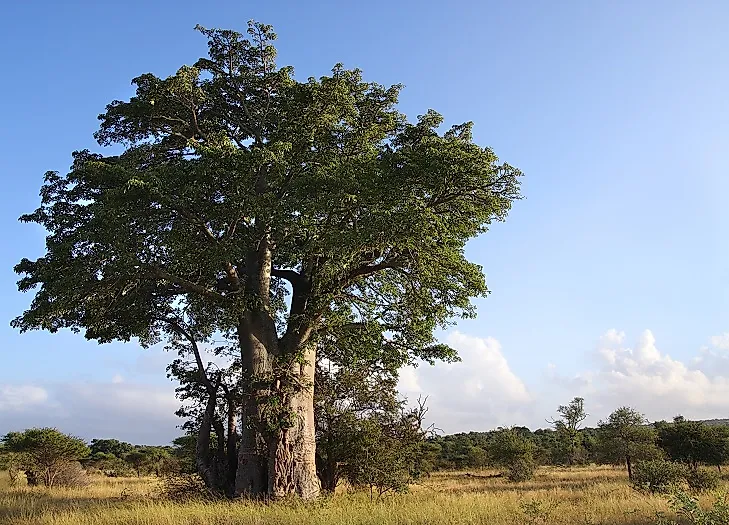Native Plants Of Madagascar

Madagascar has more than 10,000 native species of plants, of which around 90% are endemic and only found in the country. The vegetation of the country is highly contrasting with a notable distinction between the west, east, and center. The west mainly consists of grasslands, the East has tropical forests, and the southwest dry area features unique spiny forests. Those in the botanical world describe Madagascar as one of the most unique places on earth in terms of the diversity and uniqueness of its flora.
Madagascar Periwinkle
The Madagascar Periwinkle is a tender perennial shrub which grows as an herb, found either sprawling along the ground or standing erect. It can grow up to a height of 1 meter. It has white or pink flowers each with five petals. The leaves are leathery and dark green arranged in opposite pairs. Its fruit has two narrow cylindrical follicles that house numerous seeds. It is indigenous to Madagascar but also found in other parts of the tropical and subtropical areas through cultivation. It grows on sandy and limestone soils in woodlands, forests, grassland and disturbed areas. Although insects are agents' of pollination for this plant, the periwinkle is also able to self-pollinate. Ants are also agents of its seed dispersal. It does not face possible extinction soon as it has adaptations to survive in disturbed areas. It is found in large populations throughout tropical regions of the world and is also a cultivated crop. However, recent scientific discoveries of the chemical importance of the Madagascar periwinkle may pose a risk to its survival in future.
Darwin's Orchid
The Darwin's Orchid plant is large and robust, and produces one to three star-shaped flowers on its inflorescence. The flowers appear in the winter and turn from green to white within a few days. The flower's nectar star is long and can measure up to 35 centimeters. The trunk may grow upright or curved and is often bare near the base. The leaves are leathery, grayish-green and strapped-shaped. It is endemic to Madagascar and grows near the east coast on the barks of large trees or rocks in the coastal forest. It usually attaches itself on trees that have fewer leaves and to branches that are dry. It faces the loss of habitat through logging and clearance for agriculture, and through horticultural trade. It is an offense to trade this species without a permit as listed in Appendix Two of the CITES.
Madagascar Ocotillo
The Madagascar Ocotillo is a succulent spiny shrub with a thick, water-storing stem. Its leaves are oval and deciduous in the long dry season. Young plants form a tangle of stems for several years after which a central stem, gray-green in color develops. It grows to a height of 15 meters. Flowers are unisexual, yellow or whitish-green and occur in crowded clusters at the end of the branches. It occurs in the semi-arid areas in the southwest, Madagascar. It can survive in areas that receive no rainfall for over a year. It can withstand dry and drought conditions as it can store water in its leaves and stem. It has a conservation status of 'near threatened' on the International Union for the Conservation of Nature (IUCN) Red List of Threatened Species. While not currently qualified for the threatened status, it may qualify soon.
Za Baobab
The Za Baobab is a large, robust tree that grows up to between 10 and 40 meters tall and 6 meters wide. The trunk and branches are brownish-rose colored. It is wide at the base and narrows towards the top. The leaves are 5 to 6 centimeters long and palmately lobed, with a margin spanning the entire leaf. The flowers are yellow or red with yellow stamens. The plant flowers from November to February and pollination occurs through moths.The fruits are ovoid with kidney-shaped oily seeds. It occurs in southern and north-western Madagascar. It grows in arid scrublands, thorny deciduous forests, and savanna. It does well in sunny areas and well-drained soils.
Unique Flora Species on a Unique Island Nation
The many species and the high degree of endemism in Madagascar can mostly be attributed to its geographic isolation as an island. Most of the flora in Madagascar today result from the dispersal across the oceans, and this explains why the plants have continental African affinities and resemble the plants found in the Indian Ocean islands like Comoros and Seychelles. Humans greatly impact the flora of Madagascar through turning natural vegetation into farmland and settlement areas and use the plants for medicinal purposes.The Bismark palm, Tapia, traveler's palm tree, pink ball tree, and southeast Madagascar pitcher plant are among the native plants of Madagascar.
Native Plants Of Madagascar
| Native Plants of Madagascar | Scientific Name |
|---|---|
| Madagascar Periwinkle | Catharanthus roseus |
| Darwin's Orchid | Angraecum sesquipedale |
| Bismarck Palm | Bismarckia nobilis |
| Madagascar Ocotillo | Alluaudia procera |
| Za Baobab | Adansonia za |
| Tapia | Uapaca bojeri |
| Traveler's Palm Tree | Ravenala madagascariensis |
| Pink Ball Tree | Dombeya wallichii |
| Polka Dot Plant | Hypoestes phyllostachya |
| Southeast Madagascar Pitcher Plant | Nepenthes madagascariensis |











